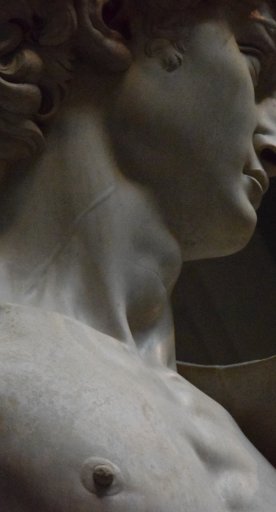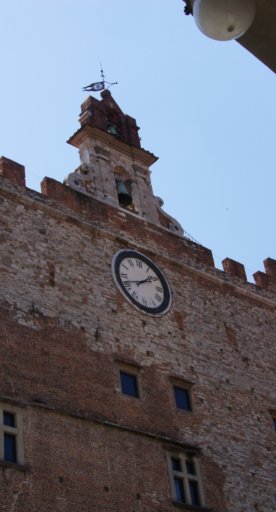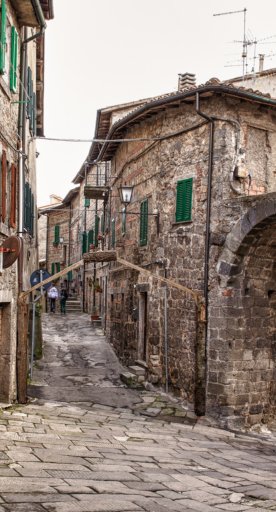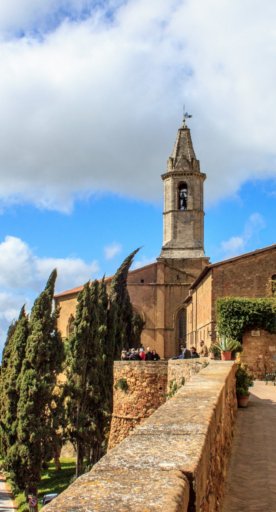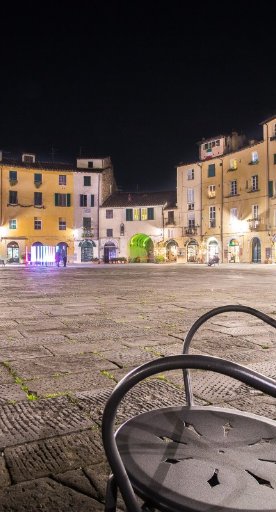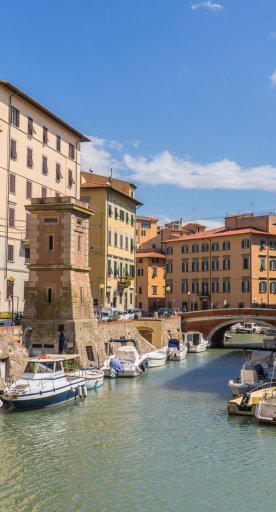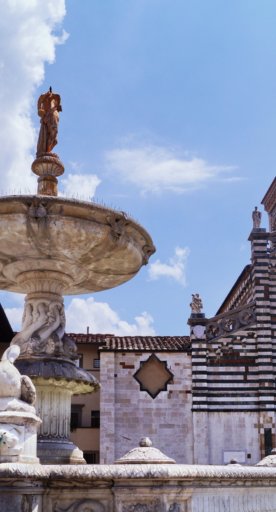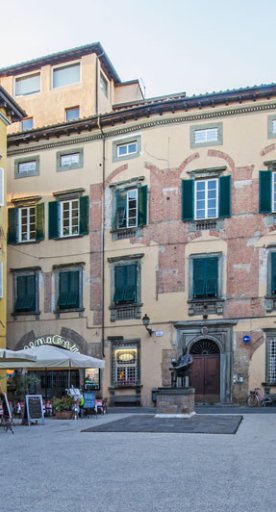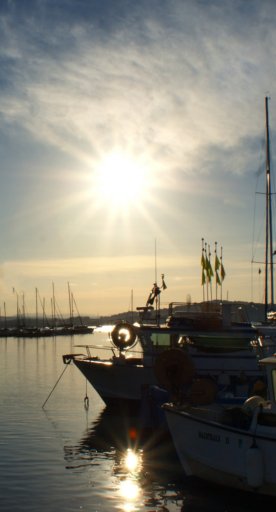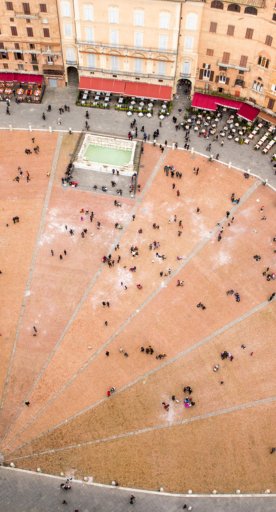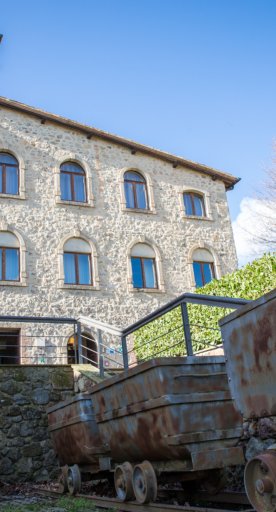

10 things to see in Massa Marittima
A few tips on what to see in and around the Maremma village
In the Maremma Grossetana area, surrounded by the Metalliferous Hills, the village of Massa Marittima is a little jewel in southern Tuscany. Its history is thousands of years old and is particularly linked to the use of mineral resources. It is still enclosed within its ancient walls.
The name may be misleading: In fact, Massa Marittima is 18 km from the sea. Nevertheless, the surrounding landscape of Mediterranean scrub forests, vineyards and olive groves is overflowing with natural beauty.
Here are some suggestions for things to do on a trip to Massa Marittima, including historic buildings, museums and beautiful views.
-
1.The Cathedral of San Cerbone
-
2.Sources of Abundance and the Tree of Fertility
-
3.The artistic garden of Maria Dompé
-
4.The Mining Museum - Subterranean
-
5.The Torre del Candeliere and the Cassero Senese
-
6.The Church and Cloister of Sant’Agostino
-
7.La Maestà by Ambrogio Lorenzetti
-
8.The Organ Museum
-
9.Lake Accesa and the Archaeological Park
-
10.Sea World Aquarium Mondo Marino
The Cathedral of San Cerbone

The medieval Piazza Garibaldi, with its unusual star shape, is the main square in Massa Marittima and represents the heart of the historic center. Towering above it, at the top of a flight of steps, is the cathedral dedicated to Saint Cerbonius, an imposing building that looks out diagonally onto the square.
The cathedral is a majestic example of Romanesque-Gothic architecture and its construction began in the 11th century, but it underwent numerous renovations that gave it its current appearance in the 14th century. Inside, we can admire the works of some great artists, including Giovanni Pisano, Duccio da Buoninsegna and Segna di Bonaventura. Particularly worthy of note is Goro di Gregorio's Arca di San Cerbone (Ark of St. Cerbonius), considered one of the greatest masterpieces of Italian Gothic sculpture.
For lovers of historical reenactments, every year (usually on the fourth Sunday in May and on August 14), the Balestro del Girifalco, one of Tuscany's best-known medieval celebrations, takes place in front of the cathedral. The event consists of a crossbow target shooting competition, preceded by a spectacular procession.
Sources of Abundance and the Tree of Fertility

The Massa Marittima Fonti dell’Abbondanza (Sources of Abundance), built in the 13th century, had a dual function: they were used to supply water to the town and were also used, on the upper floor, as a storehouse for cereals.
What makes the Fonte (Source) unique is the distinctive wall painting visible on the left façade, called the Albero della Fertilità (Tree of Fertility), a fresco that has survived to the present day thanks to a thin layer of limestone covering it. It depicts a large tree from which there are dozens of phalluses hanging and several women competing with each other to gather them, with what appears to be a festive day in the background.
The Tree of Fertility is a rare example of a 13th-century mural and it symbolically represents abundance and prosperity. To preserve the work in the best possible way, the spring’s basins are currently empty.
The artistic garden of Maria Dompé

Moving along Via Norma Parenti and arriving at Via Maremma, we discover the most recent wonder of Massa Marittima. The "Sol omnibus lucet” garden is an "garden of art" created by landscape sculptor Maria Dompè and dedicated to Norma Parenti, a young partisan honored with a Gold Medal for Military Valor.
The artist has created a true meditation area: movements of earth, turf and local stone alternate to create spirals of colors, while a sound system accompanies it all with classical music. The park is located close to the medieval walls, in a point where there is an excellent view of the Maremma valleys.
The Mining Museum - Subterranean

The Subterranean museum tells the story of Massa Marittima's mining history, bringing together the Mining Museum and the Museum of Mining Art and History to commemorate an activity that left a permanent mark on the area. The Mining Museum was founded in 1980 on the initiative of several retired miners, who decided to turn this quarry into a museum.
The route, structured like a real mine, winds for 700 meters through three tunnels, each illustrating different moments and aspects of the miners' lives. In addition to the working environments, various types of machinery, like wagons, excavators, jackhammers and ventilation pipes are also encountered during the visit.
The Torre del Candeliere and the Cassero Senese

Built in the 13th century, the Torre del Candeliere (Candlestick Tower) served as a watchtower and was the symbol of the authority of the Municipality of Massa Marittima. The tower is now one-third lower than when it was built, because of the Sienese who tore down its upper part following their victory over the city in 1335. Siena was also responsible for the construction of the arch connecting the Torre del Candeliere to the Cassero Senese (Sienese Keep), located in the center of the town for the purpose of keeping the rebellious Massa inhabitants under control.
Today, you can walk through the arch and a section of the walls of the Keep on your way to the Tower, where you can admire the sea all the way to the island of Elba.
An interesting fact: the tower is called "del Candeliere” because of the ancient custom of keeping a fire burning at the top of the building, thus making it look like a candle.
The Church and Cloister of Sant’Agostino

At the end of the 13th century, the Augustinians, who had permanently settled in Massa Marittima, initiated the construction of a church with the intention of replacing the existing church of San Pietro all'Orto that, by then, could no longer accommodate all the local worshippers.
The Church of Sant’Agostino has a simple and austere façade, which contrasts with the decorations of the pentagonal apse. The relics of St. Bernardino of Siena are kept inside, along with valuable works of art, including Empoli's Annunciazione (Annunciation), Fuga in Egitto (Flight to Egypt) by Lorenzo Lippi, the Visitazione (Visitation) and the Natività di Maria (Nativity of Mary) by Rutilio Manetti.
For a long time, the Church of Sant’Agostino also contained Ambrogio Lorenzetti's Maestà (Majesty), which has been kept in the nearby Museum of Sacred Art since 2005.
The bell tower and cloister stand to the left of the church. The latter, dating back to the early 14th century, has elegant columns with beautiful capitals and wooden roofing.
La Maestà by Ambrogio Lorenzetti

The Maestà (Majesty) of Massa Marittima is a painting on wood by Ambrogio Lorenzetti, created in 1335. It is one of the artist's first major allegorical works and one of his greatest masterpieces. The enthroned Madonna with Child in her arms is depicted with a host of saints, prophets, and musician angels on either side, while in the foreground, sitting on the steps, are the personifications of the three theological Virtues. The overcrowding of characters around the throne communicates the momentous importance of the event of the birth of Christ.
Ambrogio Lorenzetti's Maestà can be seen in the Museum of San Pietro all'Orto.
The Organ Museum

Inside the former church of San Pietro all'Orto, the Santa Cecilia Museum Foundation displays a sizeable collection of mechanical organs from the 17th to the 19th century. The Organ Museum traces the history of keyboard instruments, along with the evolution of their technology and style, and you can also admire harpsichords and fortepianos (ancient pianos).
The exhibition also boasts, among other things, a rare example of a portative organ from 1686, 18th century positive organs, a magnificent Neapolitan organ from 1742 and a Sicilian-made organ from 1771.
Lake Accesa and the Archaeological Park

About 10 km from Massa Marittima, lies Lake Accesa, a body of water of great natural and environmental interest, suitable for swimming and surrounded by lush vegetation. Mediterranean scrub, reed beds, rushes, poplars and eucalyptus trees make this an ideal place for pleasant walks along the shore or for embarking on a bicycle itinerary.
The site is also extremely relevant from an archaeological point of view: four Etruscan villages have been found near the lake and objects of considerable importance have been unearthed. Today, you can still see the foundations of the various residential areas. Given their location, the villages were probably involved in the use of the surrounding metal resources.
You can enter the Archaeological Park free of charge. We suggest combining the visit with a trip to the Massa Marittima Archaeological Museum, where the artifacts found here are kept.
Sea World Aquarium Mondo Marino

If you are looking for an activity in Massa Marittima to enjoy with the children, the Aquarium Mondo Marino is the ideal solution for families. Located in the nearby town of Valpiana, the aquarium allows visitors to go on a journey to explore the blue planet, with more than 150 species living there. The real protagonists are undoubtedly the sharks: in fact, the Aquarium gives visitors the opportunity to enter the nursery and the shark exhibition; the Shark Study Center, which carries out important research activities, is also located here.
Information about tickets and admission times are available on the Aquarium's official website.












